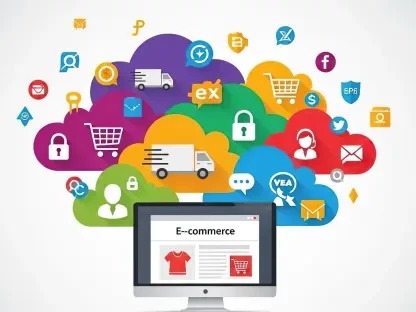As technology continues to transform the financial landscape, the future of payment processing for eCommerce appears increasingly digital and secure. This shift promises enhanced convenience and swift transactions for consumers and businesses alike. The ongoing evolution of fintech holds substantial implications for digital payments, with traditional cash payments making up just 19% of sales and steadily declining. This article explores seven key trends that will shape the future of the payment processing industry, emphasizing how these developments will influence digital transactions.
Increasing Adoption of Digital Wallets and Payments
Digital wallets and payments are set to experience widespread adoption, despite the current mistrust in specific demographics and regions. Security enhancements and the convenience offered by digital transactions will play crucial roles in shifting consumer behavior. As these digital solutions become more user-friendly, a larger segment of the population will embrace them. Gradual recognition of their benefits will help overcome initial resistance. As mobile technology advances, the integration of contactless payments into daily life will further drive this trend, enabling seamless and efficient financial interactions.
Another factor contributing to the rise of digital wallets and payments is the increasing popularity of eCommerce. Online shopping platforms offer various payment options that cater to consumer preferences. Moreover, businesses are incentivized to adopt digital payments to enhance customer experience, efficiency, and data management capabilities. Collaboration between fintech companies and financial institutions will also lead to the development of innovative solutions for secure transactions. As a result, digital wallets will become an integral aspect of both online and in-store payment processes, marking a significant shift away from traditional cash-based transactions.
Emergence of Central Bank Digital Currencies (CBDCs)
Central Bank Digital Currencies (CBDCs) are anticipated to gain traction as economies around the globe evaluate their potential impact on monetary systems. The introduction of CBDCs presents a unique challenge – how these currencies will coexist with existing cryptocurrencies while reshaping traditional financial practices. Despite assurances from Central Banks, such as the US Federal Reserve, that CBDCs will complement rather than replace cash, their widespread integration could gradually render physical cash obsolete. CBDCs promise greater efficiency in transactions, enhanced security features, and increased financial inclusion, particularly in regions facing unbanked or underbanked populations.
The impact of CBDCs extends beyond individual transactions, as they have the potential to streamline cross-border payments. Through international collaboration and standardized protocols, CBDCs could reduce friction and lower costs associated with cross-border transactions, making global commerce more accessible. This transformation will necessitate robust regulatory measures to address potential concerns related to privacy, cybersecurity, and financial stability. The development of CBDCs will require careful consideration of their design and deployment, ensuring interoperability with existing financial systems while fostering innovation in payment infrastructure.
The Rise of Cross-Border Payments
As the global economy becomes increasingly interconnected, cross-border payments will become more prevalent and essential for economic development. Economic integration and the growing economic strength of the developing world will drive demand for efficient and cost-effective cross-border payment solutions. Businesses and individuals alike require reliable methods for transferring funds internationally, and advancements in fintech are poised to meet these demands. Innovations in payment technologies will reduce transfer times, lower fees, and improve overall transaction transparency, enhancing the global trade landscape.
In light of these developments, financial institutions and technology companies must collaborate to create interoperable and standardized systems for cross-border payments. Aligning regulatory frameworks across different jurisdictions will be critical in facilitating seamless transactions. Moreover, the implementation of real-time cross-border payment systems will increase transaction speed and reliability, further benefiting international commerce. As fintech solutions evolve, the elimination of traditional barriers will enable businesses to expand their reach, fostering greater economic growth and creating new opportunities for innovation in the global market.
Advancements in Payment Security
Payment security remains a top priority as the threat of financial fraud continues to evolve. As payment processes become more sophisticated, so do the tactics employed by cybercriminals. Continuous innovation in security measures is essential to protect sensitive financial information and maintain consumer trust. Solutions such as PayCompass and other advanced payment systems must incorporate robust security protocols to stay ahead of potential threats. Emphasis on multi-factor authentication, encryption, and biometric verification will play a significant role in fortifying digital payment systems against fraudulent activities.
Security advancements are not only about preventing unauthorized access but also about ensuring the overall integrity of the payment ecosystem. The integration of artificial intelligence and machine learning into security measures can help detect and mitigate anomalies in real-time, preventing potential breaches before they occur. Regular audits, compliance with stringent regulatory standards, and ongoing research into emerging threats will be crucial in maintaining secure payment environments. As eCommerce and digital transactions grow, the necessity for continuous vigilance and innovation in payment security will only intensify.
Cryptocurrencies Maintain Their Presence
Cryptocurrencies are expected to retain a significant presence in the eCommerce landscape, despite their inherent volatility and occasional market crashes. Their utility in specific eCommerce niches, such as cross-border transactions and decentralized finance, ensures they remain relevant. Cryptocurrencies offer unique benefits, including faster transaction processing, lower fees, and increased privacy for users. Their decentralized nature provides an alternative to traditional financial systems, attracting a diverse range of users who value these attributes.
Despite the advantages, the adoption of cryptocurrencies in mainstream commerce faces challenges, particularly concerning regulatory scrutiny and consumer trust. Governments and financial institutions worldwide are grappling with how to regulate and integrate cryptocurrencies within existing frameworks. As regulatory clarity improves, the adoption of cryptocurrencies for everyday transactions may increase. Additionally, the development of stablecoins, which are designed to minimize volatility, will further bolster the credibility and usability of cryptocurrencies in daily transactions. The evolving landscape of cryptocurrencies will continue to shape their role in the future of eCommerce, balancing innovation with regulatory considerations.
Growth of Buy Now Pay Later (BNPL) Services
The “Buy Now Pay Later” (BNPL) services are poised for growth, aligning with the rising popularity of digital payments and enhanced security measures. BNPL services enable consumers to purchase items immediately and pay for them in installments, providing greater flexibility and convenience. This payment model appeals particularly to younger consumers who prefer budget-friendly options and may lack access to traditional credit facilities. As security protocols improve and consumer confidence in digital transactions increases, BNPL services are expected to witness substantial growth.
BNPL services also offer benefits to retailers by boosting sales and customer loyalty. By providing customers with flexible payment options, retailers can reduce cart abandonment rates and increase conversion rates. The integration of BNPL into eCommerce platforms enhances the overall shopping experience, catering to modern consumer expectations. However, the rise of BNPL services also necessitates responsible lending practices and clear communication of terms to prevent potential financial pitfalls for consumers. As the market for BNPL continues to expand, stakeholders must navigate these challenges to ensure sustainable growth and positive outcomes for all parties involved.
Acceptance of Open Banking
As technology continues to revolutionize the financial sector, the future of payment processing for eCommerce is poised to become more digital and secure than ever. This transformation promises heightened convenience and faster transactions, benefiting both consumers and merchants. The ongoing advances in financial technology (fintech) have significant implications for digital payments, with traditional cash payments accounting for just 19% of sales and continually decreasing. This trend underscores a significant shift towards digital methods.
This piece delves into seven pivotal trends that are expected to shape the future of the payment processing industry. These developments are projected to profoundly impact the landscape of digital transactions, making them more efficient and secure. The adoption of contactless payments, digital wallets, and blockchain technology is just the beginning. Enhanced fraud detection systems and increased regulatory scrutiny will also play crucial roles. As businesses adapt to these changes, they must stay abreast of emerging technologies to remain competitive in an increasingly digital marketplace.









